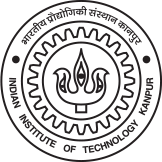
IIT Kanpur Commemorates 100 Years of Quantum Mechanics with a Special Lecture by Prof. Manoj K. Harbola
Kanpur , 30 October 2025
Source: Information and Media Outreach Cell, IIT Kanpur
Kanpur, October 30, 2025: The Department of Physics, Indian Institute of Technology Kanpur, organized a special commemorative lecture to mark a century of one of the most revolutionary developments in modern science — 100 Years of Quantum Mechanics.
The event, held at Lecture Hall L-17, IIT Kanpur, featured an insightful talk by Prof. Manoj K. Harbola, Department of Physics, IIT Kanpur, titled “100 Years of Quantum Mechanics (1925–2025): What Happened in 1925?” The event drew enthusiastic participation from faculty members, researchers, and students across departments.
TRACING THE BIRTH OF QUANTUM THOUGHT
Prof. Harbola began by revisiting the origins of quantum theory, starting from Max Planck’s idea of quantized energy in 1900, which laid the foundation for modern physics. He then discussed Albert Einstein’s photon hypothesis of 1905, which proposed that light itself is quantized, and Niels Bohr’s 1913 model of the Hydrogen Atom, which successfully explained atomic spectra through discrete energy levels.
He further highlighted the pivotal contributions of Indian physicists Meghnad Saha and Satyendra Nath Bose, whose early applications of quantum ideas to astrophysical phenomena and statistical mechanics, respectively, played a crucial role in shaping the field.
HEISENBERG’S LEAP: THE BIRTH OF MODERN QUANTUM MECHANICS
The lecture culminated in a detailed exploration of Werner Heisenberg’s 1925 paper, which, as Prof. Harbola explained, marked the true birth of quantum mechanics as an independent conceptual framework. Abandoning the classical notions of particle position and trajectory, Heisenberg reformulated the theory entirely in terms of observable quantities—frequencies and amplitudes of emitted radiation. This breakthrough led to the development of matrix mechanics, a formalism that fundamentally redefined how physicists describe microscopic systems.
Prof. Harbola illustrated how Heisenberg’s mathematical innovation, later developed further by Born, Jordan, Schrödinger, and Dirac, became the cornerstone of twentieth-century physics, influencing everything from semiconductors and lasers to quantum computation and particle theory.
A CENTURY OF SCIENTIFIC TRANSFORMATION
Reflecting on the journey of quantum theory over the past century, Prof. Harbola remarked: “Heisenberg’s 1925 work stands as one of the finest demonstrations of creativity and logical thinking in human history. It represents the moment when physics transitioned from the classical to the quantum world — a shift that has since redefined our understanding of nature at its most fundamental level.”
He further emphasized that quantum mechanics is not merely a theoretical construct but a framework that has profoundly shaped technology, philosophy, and even our conception of reality. The lecture encouraged students and researchers to appreciate both the historical depth and the continuing relevance of quantum mechanics in modern science.
ABOUT THE SPEAKER
Prof. Manoj K. Harbola is a senior faculty member in the Department of Physics at IIT Kanpur. A distinguished theorist, he has made significant contributions to quantum mechanics, atomic physics, and density functional theory. Over his academic career, Prof. Harbola has been recognized for his excellence in teaching and research, inspiring generations of students to engage deeply with the principles of physics. His talks are known for their clarity, conceptual richness, and ability to connect complex ideas to their historical roots.
ABOUT THE DEPARTMENT
The Department of Physics, IIT Kanpur, is among India’s leading centers for research and education in fundamental and applied physics. The department continues to uphold a tradition of excellence in teaching and frontier research, covering diverse areas such as condensed matter physics, astrophysics, photonics, high-energy physics, and quantum information.
About IIT Kanpur
The Indian Institute of Technology Kanpur, established in 1959, holds the distinction of being recognized as an Institute of National Importance by the Government of India through an Act of Parliament. Renowned for its excellence in science and engineering education, IIT Kanpur has made significant contributions to research and development over the decades. Its expansive, lush green campus spans 1,050 acres and hosts a rich array of academic and research resources. The institute comprises 20 departments, 26 centers, three interdisciplinary programs, and three specialized schools across engineering, science, design, humanities, and management disciplines. With over 590 full-time faculty members and more than 9,500 students, IIT Kanpur remains a leader in fostering innovation and academic rigor.
For more information, please visit www.iitk.ac.in.




